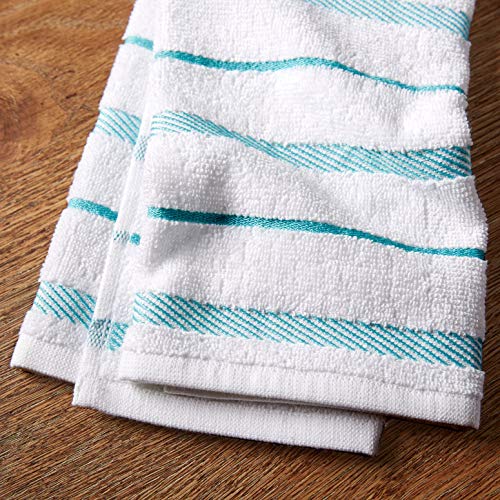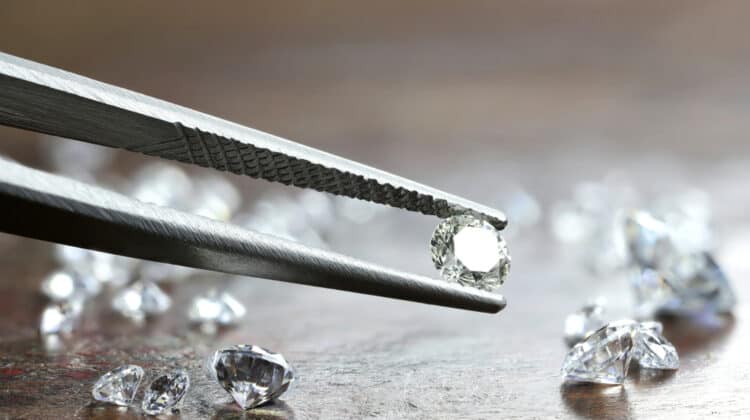
Blenders are one of the most convenient appliances that many people take for granted.
While their main purpose is to blend and puree foods and liquids, blenders can actually do a lot more.
Their compact size and versatility make them a staple in most kitchens, but some things can go wrong with them from time to time.
Many blenders tend to be loud, which can be annoying if you are sensitive to loud noises or don’t want to disturb other people in the home while preparing something.
Luckily, most of the things that cause blenders to be loud are simple, and it’s easy to make repairs or muffle the sounds of a loud blender.
Why Are Blenders So Loud? (Top 10 Reasons)

Blenders are loud because they have metal components and motors that work hard and spin fast to mix liquids and foods.
Much of the noise a blender puts out is due to the motor working hard or the resistance between the metal blades and the food items in the blender.
Just because a blender is making a loud noise doesn’t necessarily mean there is a problem with it.
It could just be the result of a loud motor.
However, there are many issues and problems that could make a blender loud.
If your blender was quiet when you first got it and seems to have gotten louder over time, you might want to check to see if any of these problems are the cause of the noise.
1. Metal Blades
[Updated Version] 7 Fins Blender Blade Compatible with Ninja Blender Blade Replacement for Ninja Auto iQ BL682-30 BL642-30 BL450-30 BL482-30 BL687CO-30 ect.
Most blenders have metal blades.
Blender makers choose steel blades because they are capable of mixing a variety of foods, even those that are hard or sticky.
The problem with steel blades, or blades of any other metal, is that they create a grinding pattern in the motor.
The back and forth movement of the metal blades also breaks down components in the motor, which can cause loud noises and could eventually destroy the blender and stop it from working at all.
The metal blades can also cause serious problems as they wear down and start to become misshapen.
If they are misshapen, they may rub against other parts of the blender or make more noise when they come in contact with certain foods that are being blended.
2. Speed
Vitamix E310 Explorian Blender, Professional-Grade, 48 oz. Container, Slate
Blenders sometimes have to move at very high speeds in order to blend or mix up food.
The finer you want the blend or mix, the longer and faster the blender needs to run.
It takes a lot of work for the motor to get the blades spinning at such high feeds.
The higher the RPMs, the more motion, and the more motion, the louder the blender gets.
The resistance between the blender blades and the food can also make noise.
Foods that are hard, such as ice, frozen fruits, or anything solid, will make a sound as the blades connect with it and try to break it down or puree it.
The higher the speed and the harder or thicker the foods being blended, the more noise will be produced.
3. Motor Problems

Many older blenders have loud motors.
Sometimes a blender can be loud simply because it has a problem with the motor.
If the blender is a few years old, the damage could be caused by normal wear and tear.
Blenders use electromagnets to make the blades spin.
The faster the speed or the coarser the blending, the more the blender has to work, the stronger the magnets have to be.
Strong magnets mean more noise as the parts move near each other.
If the engine starts to wear out or break down, pieces of it may rub together, or the pieces may have more friction which makes the sound of the movements clearer.
It can sound like a dragging sound, metal on metal sound, or even a rubbing sound.
4. Strain

You may have plans to use your blender to mix up and combine a lot of different things, but some things just shouldn’t be put in the blender.
Just because the blender can mix these things up doesn’t mean they aren’t taking a toll on the blades and motor.
If the motor has to strain to blend up things that are too big or too heavy, the motor will have to work a lot harder, and it will be noisier.
Grinding sounds, sounds or rubbing metal, roaring sounds, or any mechanical clicks or noises are a sign that the blender is straining to move the blades.
Eventually, the motor will overheat and stop working completely.
Some blenders have been known to catch on fire because there is too much strain on the motor, and the motor overheats quickly and causes an electrical fire.
5. Quality
BLACK+DECKER PowerCrush Countertop Blender, BL1230SG, 6-Cup Glass Jar, 4 Speed Settings, Dishwasher Safe, 700W Motor
Most high-quality blenders are designed to run more quietly.
The motors are made to run more smoothly, and they are made stronger and more durable, so they are less likely to struggle to blend certain foods.
If a blender seems to be extremely loud, it may be due to its poor quality.
Blenders that are of poor quality are more likely to be made with cheaper parts that can’t hold up and bend or break easily to cause problems with the motor and to rub against other mechanical parts.
Better-quality blenders have parts that are made of stronger materials that won’t break down or become misshapen as easily.
They won’t rub against other parts, will remain oiled and smoothly operating, and are shaped in a way that makes the moving parts more aerodynamic, so as they are moving or spinning, there is less wind resistance and noise.
6. Improper Cleaning

Blenders must be cleaned after each use.
If they are not properly cleaned, food particles can get stuck in the motor or around the blades.
Even liquids that are not rinsed and removed properly can become sticky and lead to corrosion or prevent the moving parts from rotating as they should.
Anything that gets in the way of the blades moving or makes them harder to move can cause problems.
It’s more likely to put a strain on the motor or cause the blades to rub against other parts of the blender.
Operating a blender that is dirty or not cleaned properly will not only cause it to run loudly but will also eventually stop it from running.
7. Something Is Loose

When blenders run, there are a lot of things that move inside and outside.
Blenders have a lot of parts, and while the motor is contained, there are plenty of other parts that can come loose and get stuck in the blades or even fall into the motor.
The loose parts will move around as the blender runs and vibrates.
The more parts that are loose, the louder the sound will be.
Loose parts may eventually vibrate and shake so much that they fall off and cause the blender to no longer work.
When things are loose, the sound may be more like a rattle than a mechanical sound.
The lids, handles, buttons, and base are the parts of the blender that are the most likely to become loose and rattle when the blender is being operated or running.
8. Broken Parts

It’s easy for things to break off in a blender.
The lids, fasteners, blades, screws, and even small pieces of plastic around the base of the blender can come ajar and break off.
When these pieces are not where they should be, it can cause problems with the entire appliance.
It can allow for more movement, improper movement, and put a strain on the motor, which can make the blender noisier.
It can also be dangerous to operate a blender that has broken parts.
It could overheat, catch fire, or even cause electrocution.
Sometimes it can be hard to tell if parts are broken, especially if the parts are contained inside the motor housing or base of the blender.
Most people don’t take the time to inspect the blender if they assume something is broken and won’t attempt to repair it.
9. Put Together Wrong

Blenders are fairly easy to put together, and many of them are ready to use straight out of the box.
Those that do need to be put together may have some small parts.
The motor and base of the blender will be in one piece, and the pitcher and lid will be separate.
Some blenders also have double lids, so you can pull up a small portion of the lid to add food or liquids as the blender is working, without taking off the entire lid and risking a mess.
If any of these pieces is not installed or attached properly, they will vibrate, rattle, and make a lot of noise while the blender is running.
Most blenders come with an instruction manual, and if there are pieces that need to be assembled, the instructions will be included in the manual.
Some blenders need to be disassembled before they are cleaned and then reassembled once they are clean and dry.
10. Location

The area of the kitchen or home where the blender is kept can cause it to be noisy.
Blenders do make noise, and that noise can carry depending on the design of the home or the setup of the kitchen.
If the blender is kept under a cabinet, the noise may echo through the home.
If the blender is sitting on a metal or wooden shelf, it may vibrate while running and make noises.
If the blender is sitting near other appliances, it could vibrate or shake against them when running and also cause noise.
Sometimes the vibration sounds of a blender as it runs can seem like they are coming from inside the blender, even if they are actually the result of the blender moving around on or against a hard surface.
How Do You Make A Blender Run More Quietly?

If your blender is making a noise when it is running, the first thing you need to do is find the cause of the noise.
Once you realize the reason for the sounds, it is easy to correct the issue.
Sometimes it can be hard to determine which reason is to blame, and you may need to try several different methods for getting the blender to run more quietly.
Here are a few methods to try that may help make your blender run more quietly.
1. Move It

If you think the noise is due to the blender being too close to other appliances or rattling against a counter or another object, you may be able to move it to a different location so it won’t make noise.
Finding a place that has a soft surface and is clear of other appliances will allow the blender to operate without bumping into other things. Make sure the blender is sitting on a level surface as well.
This will prevent it from moving around as much when it is running and help it operate more quietly.
2. Place It On A Rubber Mat

Blenders can move around a lot when they are operating, and if they are on a hard surface, that movement can lead to vibrations and loud noises.
Most counters, tables, and cabinets have hard surfaces.
The base of the blender can hit against it when moving, and the sound of two solid objects can make a lot of noise.
Adding a rubber mat underneath the blender will reduce movement and sound.
3. Wrap It In A Towel
KitchenAid Albany Kitchen Towel 4-Pack Set, Aqua/White, 16"x26"
If you can’t find a way to operate the blender quietly, you may want to muffle the sound with a towel.
When you are using the blender, wrap a towel around it.
The towel will absorb some of the movement and help muffle the sound of anything that’s vibrating.
The towels will also come in handy if anything overflows out of the blender while it’s moving around or if it moves so much that it spills over and causes a mess.
4. Clean It Properly

Cleaning your blender regularly and properly will ensure it doesn’t have any food debris or liquid left behind that could cause the motor to lock up.
Always rinse the blender thoroughly and use a dish detergent to disinfect and help break down any food particles or gunk that may be attached to the blades or other moving components of the blender.
Rinse it thoroughly and dry it completely before you store it or attempt to use it.
5. Reduce Speed

Blenders usually move more and make more noise when they are being operated at high speeds.
Most people operate their blenders at higher speeds whenever they need to puree something or blend it smoothly.
By reducing the speed, you may have to operate the blender longer, but it will be able to run at a slower speed and still get your food to the desired texture.
This will also reduce the wear and tear on your blender and make it more likely to last longer.
6. Check The Assembly
Replacement Parts Compatible with Osterizer Oster Blender Blades Assembly with 4961 Blender 4-Point Fusion Blade & 4902 Jar Bottom Cap and 3 Pcs Rubber Gasket
If your blender is making a noise that isn’t caused by the motor or vibration against another object, you may want to check to make sure the blender has been assembled properly.
Even though most blenders do not require much assembly, if you aren’t careful, you could connect the pieces incorrectly.
Even though they line up and allow the blender to start and run, the pieces may not be installed or assembled properly.
This could lead to rattling and a lot of noise.
Correcting the assembly problems will make the blender sturdier and reduce the sound it makes.
7. Check For Broken Parts

It’s never a good idea to operate a blender if any parts seem to be broken.
Even the smallest parts that don’t seem to play a role in the function of the blender should be checked and replaced or repaired.
If your blender is new or was expensive, it might be possible to replace the parts. If the blender is old, there may not be parts available for it.
NEXT: What Is Mike Tyson’s Net Worth? (Updated 2023)![[Updated Version] 7 Fins Blender Blade Compatible with Ninja Blender Blade Replacement for Ninja Auto iQ BL682-30 BL642-30 BL450-30 BL482-30 BL687CO-30 ect. BL450-30 BL642-30 BL482-30 BL682-30 ect. [Updated Version] 7 Fins Blender Blade Compatible with Ninja Blender Blade Replacement for Ninja Auto iQ BL682-30 BL642-30 BL450-30 BL482-30 BL687CO-30 ect. BL450-30 BL642-30 BL482-30 BL682-30 ect.](https://m.media-amazon.com/images/I/41cWaZ+ZAuL._SL500_.jpg)



























